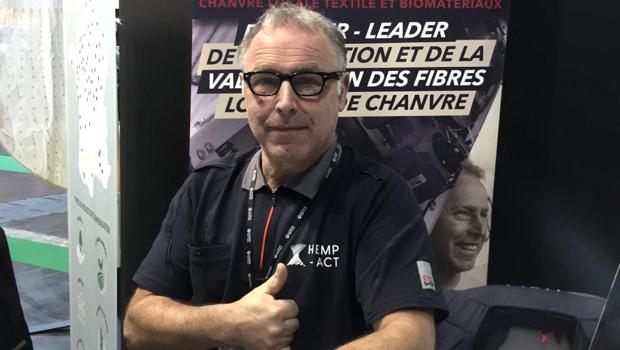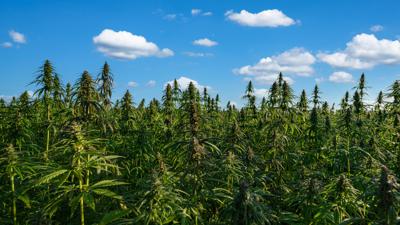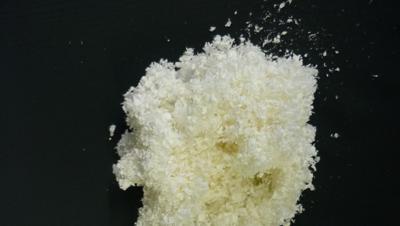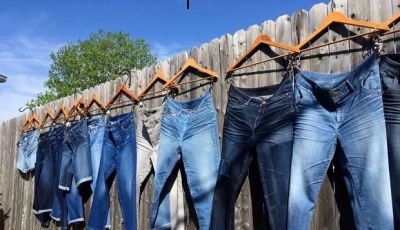Interview with Pierre Amadieu, Hemp-Act

Pierre Amadieu (Source: Hemp-Act)
In the past, hemp was a globally widespread plant for fiber production and was almost completely displaced by cotton and later by synthetic fibers in the last century.
Why are we currently increasingly hearing about hemp as a sustainable fiber alternative?
I see 2 main reasons for the current renewal of hemp: First, I think there is a global awareness, both among consumers and economic players in the textile industry. Since the Rana Plaza tragedy, the fast fashion industry has been strongly invited to reinvent itself. The Covid crisis and the climatic trends that are unfolding around the world have amplified this awareness. Today there is therefore a new demand for more environmentally friendly and worker-friendly consumption, which also insists on the relocation of production.
Finally, if hemp has more or less disappeared from the markets during the 20th century, it is mainly due to anti-hemp lobbying: because hemp generated the interests of the wood, oil and cotton industry in the south of the USA. This lobbying in Washington was then translated into political decisions (Marijuana text act1937-USA) that took on a global geopolitical scope, with the Marshall Plan at the end of WW2. It is therefore only a fair return of the things that hemp finds today in the eyes of consumers around the world, who recognize all its qualities and all its interest.
I see 2 main reasons for the current renewal of hemp: First, I think there is a global awareness, both among consumers and economic players in the textile industry. Since the Rana Plaza tragedy, the fast fashion industry has been strongly invited to reinvent itself. The Covid crisis and the climatic trends that are unfolding around the world have amplified this awareness. Today there is therefore a new demand for more environmentally friendly and worker-friendly consumption, which also insists on the relocation of production.
Finally, if hemp has more or less disappeared from the markets during the 20th century, it is mainly due to anti-hemp lobbying: because hemp generated the interests of the wood, oil and cotton industry in the south of the USA. This lobbying in Washington was then translated into political decisions (Marijuana text act1937-USA) that took on a global geopolitical scope, with the Marshall Plan at the end of WW2. It is therefore only a fair return of the things that hemp finds today in the eyes of consumers around the world, who recognize all its qualities and all its interest.
What are the special properties of hemp?
Hemp can be a very healthy food with large amounts of poly unsaturated fatty acids and proteins. Hemp shivs and fibers also have pretty interesting qualities as an insulating material that regulates indoor moisture, keeping people warm in winter and cool in summertime with no air conditioner. Regarding textile applications, hemp is a very comfortable fiber, breathable, resistant, sustainable, that you can wear in any season.
Hemp-Act is offering down-sized solutions for local hemp value chains. In 2023 you will set a commercial offer for a first series of decorticating lines. Can you please describe and explain this technology?
For political reasons, which I have just mentioned, there was very little industrialization and few innovations in the processes related to the extraction and valuation of textile hemp during the 20th century. This is a fantastic reservoir of innovation for us.
We therefore rely on ancient know-how dating back several millennia and which in the 19th century was state-of-the-art. We have transposed its know-how to the constraints of modern agriculture and the expectations of today's markets, whether they are textiles, food or building insulation. Let us not forget that hemp feeds us, dresses us and lodges us.
Our technologies are therefore based on a decortication that respects the mechanical properties of hemp fibers. The basic module is the fluted roller breaker and our specialty is the extraction of long textile hemp fibers, which are in high demand both in Europe, China and India.
We have essentially concentrated our development work to make our line of decortication as simple as possible, which is very easy to operate, easy to maintain and which is also affordable in terms of price. The downsizing of the line fulfilled the dual objective of making it economically and environmentally more efficient. Moreover, local productions are plentiful and consume much less logistical needs.
For what applications could hemp fibers be used?
They are numerous applications within the fields of food, health, building insulation, and so on. But regarding the textile industry, there are some sectors where hemp is getting more important each day:
- the nonwovens industry has used technical hemp fibers for decades
- for the textile industry there are 2 main sectors: upholstery and fashion industry.
- nowadays there is a new and incredible interest for long hemp fibers as reinforcement for biomaterials. In the decades to come, this new market may be 10 time more important than traditional textile demand.
What share could hemp have in the global fiber market in the next few years? Are there already large projects planned for the cultivation of hemp for textile fibers in Europe?
Nowadays, the hemp market is peanuts, it represents something like 0.02% of the global textile fibers market. We foresee hemp to increase up to 10% of the global textile market in 2050.
In Europe there is an increasing interest for hemp processing and valuation as a textile resource, and it is quite new. There are 2 opportunities:
- The European flax industry, from 2022, is equipped with a brand new device: a hemp harvester dedicated to provide the flax scutching line. This is mainly due to the dynamic French NPO, called “Lin et Chanvre Bio”.
- Our hemp long fiber decorticating line. Our commercial offer is to be launched in early 2023, and the first in series deliveries are expected in early 2025. We already have registered demands, from big players in the hemp textile industry, for several thousands of tons of long hemp fiber per year, at a very interesting price for our clients. And this is just a starter.
What are the particular challenges of converting to hemp, for both agriculture and in processing in the textile industry?
Growing and harvesting hemp is not the biggest challenge, but to achieve this issue it is very important to train and to manage the farmers. An intensive and dedicated support for farmers is the constraint to achieving the textile quality standards and specifications. A good retting is essential to achieving textile quality.
There are 2 main options for hemp to enter the textile industry, depending on the spinning process:
- traditional long fibers spinning for flax and hemp: these spinning mills have to be delivered with long fibers from sutching mills or from Hemp-Act decorticators. This is the highest quality for 100% hemp yarn.
- “cottonized” hemp fibers will enter ring spinning or open-end spinning, blended with cotton (30/40% hemp). Hemp-Act decortication is also offering a solution to enter this spinning process. This spinning process will offer cheaper blended hemp yarn.
There could have been some bottlenecks for hemp to become a major fiber again, but textile machine manufacturers around the world felt that there was change in the air and are therefore quickly developing a customized offer! Let’s see what happens at the ITMA 2023 in Milan.
I am very confident that hemp is going to be the Rock Star for the fashion industry for decades, offering the opportunity for this industry to become eco-friendly.
What is your guiding theme, what is your vision? Can you be helpful with your technologies?
Hemp is sequestering more than 10 tons of CO2 per year and per hectare, this is our fuel. By 2050, we foresee hundreds of millions of hemp crop to feed, dress and house a prosperous and peaceful humanity.
We work to make our tools and solutions a part of this essential shift to a bio-based economy.
The interview was conducted by the TextileTechnology team with Pierre Amadieu, President of Hemp-Act, Lacapelle-Marival/France (pierre.amadieu@hemp-act.com).



